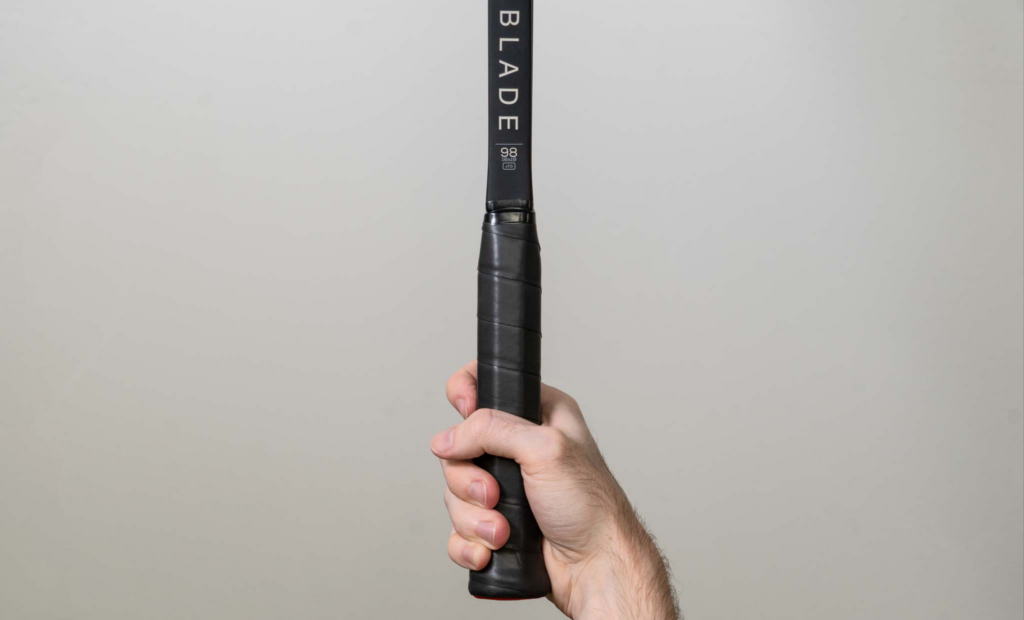The sport of tennis has seen significant evolution over the years, and one aspect that has undergone immense change is the forehand grip. In the early days of tennis, players predominantly used an Eastern forehand grip. This grip, while reliable and great for flat shots, wasn’t quite able to generate the power and topspin needed for a more aggressive style of play.
As the sport progressed, players sought new ways to enhance their game and hence the Western grip was born. The Western Forehand Grip, which gave players the ability to produce powerful shots and heavy topspin, became popular amongst professionals and advanced players. For aggressive play from the baseline and in handling high-bouncing balls, the Western Forehand Grip proved to be highly effective.
While the Western grip brought about a revolution in the tennis world, it also brought its own set of challenges. It was not an easy grip to master and may not be the best choice for beginners or intermediates. The excessive topspin it creates can often come at a cost of reduced speed and flat shot accuracy. The Western grip also means that the racket face closes more, making it difficult to handle low bouncing balls.
Enter the Semi-Western Forehand Grip. It was a breath of fresh air to players who were stuck between the moderate topspin of the Eastern grip and the heavy topspin of the full Western grip. By offering a balance, the Semi-Western Forehand Grip quickly gained popularity. Professionals were not the only ones who gravitated towards it, even amateurs found this grip to be more user-friendly and manageable to incorporate into their gameplay.
Interestingly, a pro tip often given to players looking to find the Semi-Western forehand tennis grip is to simply turn your hand and racquet over to your backhand. For both versatility and control, the dominant hand is usually in Continental or Eastern Backhand Grip, while the non-dominant hand is in Eastern Forehand or Semi-Western Forehand Grip. The perfect blend of power, control, and spin that this grip combination offers is why you’ll see the Semi-Western Forehand Grip as the grip of choice amongst many pro players today.
Understanding the Semi-Western Grip
Now, let’s delve deeper into the details that characterize the semi-western grip. Think about it as the power-packed middle child sandwiched between the moderate topspin-laden eastern grip and the heavier topspin-focused full western grip. This is your ultimate trump card, providing a striking balance of topspin and control. It gives you the stability you need and the topspin you desire. And remember, just like every grip technique, the semi-western has its own set of challenges, but overcoming them can significantly enhance your game.
Definition and Characteristics
The Semi-Western Forehand Grip sits pretty right in the middle of the spectrum, retaining the best of both Eastern and Western grips. Imagine holding the racket with your dominant hand like the Eastern Backhand Grip, but with your non-dominant hand as in the Eastern Forehand or Semi-Western Forehand Grip. Delivering balls with a punch, this grip is your key to browse through an array of shot variations with much-needed topspin. It lends ample comfort to the wrist and equips you with the power to control and direct the ball better.
Grip Technique

Here’s the fun part-journeying the road to master the semi-western grip. Let me guide you through a sequential, step-by-step approach.
- Begin by positioning your base knuckle on the third bevel of your racquet handle, mimicking an eastern backhand grip.
- Next, take your non-dominant hand and restrict it in an eastern forehand or semi-western forehand grip.
- Ensure a comfortable grip between your thumb and index finger. The more natural it feels, the better your control over shots would be.
- Pro-Tip: After finding the semi-Western forehand tennis grip, turn your hand and racquet over to your backhand. This would facilitate a seamless transition from forehands to backhands and vice-versa.
- Practice this grip on-ground before heading into the court. Simulation helps not only in learning the technique but also in spotting any discomfort early on.
Voila! You’re now equipped with the knowledge of the Semi-Western Forehand Grip! Ready to take your game to the next level?
Advantages of the Semi-Western Grip
When discussing Spin Potential, the Semi-Western Forehand Grip truly comes into its own. The key here is the generation of topspin – this grip does it like no other. Topspin is how you control your ball, and with this grip, your topspin will become a weapon that will significantly influence the bounce of the ball. With a pronounced brushing action on the ball, a semi-western grip will enable you to command high bouncing, fast spinning shots that could potentially land you with a winning edge over your opponent.
Moving on to Power and Depth, this grip isn’t just about control. With the semi-western grip in your toolkit, you’ll be unleashing powerful shots that will land deep within your opponent’s court territory. The grip gives you access to a unique blend of power, control, and depth. Long story short, your forehand will become a force to be reckoned with, putting your opponent on their back foot and allowing you to aggressively seize control of the rally.
On the feature of High Ball Adaptability, picture this – you’re engaged in a fierce rally on a modern hard high-bouncing balls coming at you. court with This is where the semi-western grip shines brightly. to Thanks its design, it allows you to easily adapt to these high balls, making it ideal for today’s fast-paced, aggressive tennis. Even on a clay court, where balls tend to bounce higher and slower, the semi-western grip will allow you to effectively execute high ball shots, keeping you in control at all times. It’s versatility truly makes it a go-to choice for tennis players of all levels.
Transitioning to the Semi-Western Grip
From Eastern to Semi-Western
If you’ve been playing with an Eastern grip, perhaps you’re considering a shift to the Semi-Western forehand for the added spin and control it can offer. This transition requires some adaptations, so it’s crucial to approach it intentionally. Let’s explore some strategies to help you make the switch.
Firstly, it’s not a giant leap, the Semi-Western grip rests somewhere between the Eastern and Western grips. Finding the right balance is key. The Pro Tip is, once you’ve found your comfortable Semi-Western forehand tennis grip, you can simply turn your hand and racquet over to change to your backhand.
This manoeuvre may take a little time to get familiar with, but with persistent practice, you’ll begin to appreciate the fluidity it offers. Remember the difference, in Semi-Western, your dominant hand will be in Continental or Eastern Backhand Grip, while your non-dominant hand will be in Eastern Forehand or Semi-Western Forehand Grip. Keep this in mind as you practice your swings. —
Common Challenges
Shifting your grip is no small adjustment, and it’s natural to meet some hurdles along the way. However, being aware of what these challenges might be can equip you better to navigate them.
Timing is, unsurprisingly, a frequent early obstacle. The Semi-Western grip asks for the ball to be hit a bit later than the Eastern or Continental grips, which can throw off your tempo initially. Aim to hit the ball at the apex of the bounce or just as it begins to descend.
Another challenge often mentioned, especially for those moving from the Eastern grip to the Semi-Western, is wrist discomfort. This stems from the slightly more extreme angle that the wrist needs to take on, but it’s usually a temporary issue. Focus on your wrist strength, stretch, and rest your wrist to help prevent any long-term problems.
Let’s keep in mind that every player, including professionals, has had to take time to adapt their grip, and the challenges you encounter are just part of the journey. Persist, stay patient, and soon enough, the Semi-Western grip will feel like second nature.
Incorporating the Grip into Your Game
Practice Drills for Mastering the Semi-Western Grip
Before we dive in, remember, practice makes perfect — especially when we’re talking about tennis grips. You might be wondering how to familiarize yourself with the semi-western grip. Well, put on your tennis shoes, grab your racket, and let’s jump into it.
One technique to keep in mind is working on your footwork. Your feet lay the foundation for a powerful and controlled shot. Try initiating your drills from an open stance to keep your balance. Executing your semi-western forehand shots from different areas of the court will also support your footwork development.
Another vital component is your swing path. The swing path with a semi-western grip is a low-to-high motion, so incorporate drills that focus on this swing path pattern. Adjust your practice sessions according to the day’s performance, making sure to work on both vertical and horizontal swings. Persistently practicing these swings will assure you a high margin of error and an effective topspin.
A good grasp isn’t enough though, the follow-through matters too. Imagine yourself whipping the ball during your drills. Extend your arm fully, finishing the stroke with your racket over your shoulder. The semi-western forehand grip allows for a fluid and flexible follow-through, so make it count.
Incorporating the Semi-Western Grip into Competitive Play
Now, you’ve done the groundwork. You’ve got the fluency, fluidity, and the footwork. However, you might still feel a little nervous about bringing the semi-western grip into your match play. That’s completely normal. Here’s how you can overcome those nerves and make the best out of your new grip technique.
An essential part of a tennis match is your mindset. Confidence is key. Training your mind to stay positive, focused, and composed during large and small confrontations will help you manifest that training onto the court.
Having a strategy is just as critical, if not more, when you’re in the heat of the match. Knowing when to be aggressive with your shots, the right time to approach the net, or learning to develop consistency in your baseline rallies are all part of the game.
The semi-western grip gives you a balance between moderate and heavy topspin, so use it to your advantage. The grip allows you to play with different angles and depths, turning around the game and keeping your opponent guessing.
Remember, finding the sweet spot of the semi-western forehand grip and incorporating it into your game isn’t an overnight process. It takes patience, effort, and most importantly, consistency. Remember to take it one shot at a time and always keep that tennis spirit high!
Case Studies: Pros Using the Semi-Western Grip
Let’s take a closer look at how the Semi-Western grip has influenced the game styles of professional players. Its use among tennis pros offers a great insight into the grip’s effectiveness. Player Examples are always instructive, and learning from pros who excel with the semi-western grip can significantly enhance your own gameplay.

One recognizable face who has mastered the semi-western grip is Rafael Nadal. The grip has allowed Nadal to hit high bouncing shots that approach his opponents from awkward angles. Similarly, Serena Williams, another iconic player, has harnessed the power of the semi-western grip to generate incredible depth and spin on her forehands, making her a formidable component on the court. Observing these professionals play can provide practical insights into how the grip can be used to shift the dynamics of the game.
In order to fully highlight the strengths of the semi-western grip, a comparative analysis with other types of grips is essential. This Comparative Analysis helps you discern the unique advantages of the semi-western grip.
For instance, comparing the semi-western to the full western grip often used by advanced players and pros alike, you’d notice the former offers a balance of moderate topspin and power sturdiness. This feature makes it a versatile choice for players. On the other hand, the full western grip, though ideal for producing heavy topspins, tends to affect shot consistency and often demands extensive practice to perfect.
Marshalling these observations and utilizing them in your own game, you can start to experience the benefits of the semi-western grip first-hand, enhancing your playing style and overall tennis technique.
Overcoming Limitations
Net Play and Slice Shots with the Semi-Western Grip
When it comes to volleying and slicing, the Semi-Western grip may seem challenging at first glance. Don’t let this discourage you. While indeed, these are perceived weaknesses, they can effectively be managed with practice and technique optimization.
Volleying, especially, may require transitioning to a more traditional Eastern grip momentarily. Yes, some might say this transition takes time. Yet, the benefits of using the Semi-Western grip for your baseline play and handling high bouncing balls well offset this minor setback.
As for the slicing, incorporating a slight shift in your wrist position during the shot could help you utilize the semi-western grip even for precise, low-bouncing slices. Yes, you heard it right! It may feel unnatural at first, but stick with it, and you’ll soon see the difference in your game.
Adjustments for Surface Variations with the Semi-Western Grip
Just like in life, tennis requires adaptability. As you transition between different court surfaces, slight tweaks to your grip and play style won’t be amiss. Each court surface comes with its own intricacies, and how you adapt your Semi-Western grip to these can make a significant difference in your performance.
Are you moving to a grass court? You might want to consider hitting your shots flatter. Thanks to the Semi-Western grip’s versatility, you can easily modify your shots to skid them low over the net, making them harder to return on a fast, slick grass surface.
Clay court, on the other hand, demands a heavy topspin play. The Semi-Western grip, renowned for generating powerful forehands with heavy topspin, is, therefore, a fantastic choice. Remember to adjust your footwork on the slippery clay and let your Semi-Western grip do its magic in those high bouncing balls.
Remember, adaptability on the court is the key. Embrace the inherent versatility of the Semi-Western grip and let it take your game to new levels.




















